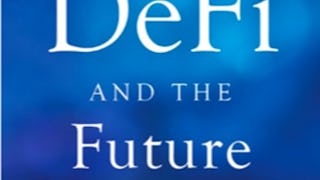DeFi and the Future of Finance is a set of four courses that focus on decentralized finance. The final course is called DeFi Opportunities and Risks. It is essential that you complete the first three courses: I. DeFi Infrastructure; II. DeFi Primitives; and III. DeFi Deep Dive before beginning the fourth course. The course starts with the premise that an analysis of any new technology must clearly gauge the risks and challenges. Given that DeFi is only a few years old there are plenty of risks. The course begins with the most obvious risk: smart contract risk. Smart contracts are foundational for DeFi. The code of these contracts is public - opening a clear attack vector for hackers. That is, in traditional finance, hackers need to break into a system to get access to the code and data. In DeFi, everything is open source.There are many other risks studied including: Governance risk; Oracle risk; Scaling risk; Decentralized Exchange or DEX risk; Custodial risk; Environmental risk; and Regulatory risk.



Decentralized Finance (DeFi) Opportunities and Risks
This course is part of Decentralized Finance (DeFi): The Future of Finance Specialization

Instructor: Campbell R. Harvey
Access provided by Coursera Learning Team
12,681 already enrolled
(335 reviews)
Recommended experience
What you'll learn
A framework to evaluate DeFi risk; Environmental implications of cryptocurrency; and winners and losers in the future of finance.
Skills you'll gain
Details to know

Add to your LinkedIn profile
4 assignments
See how employees at top companies are mastering in-demand skills

Build your subject-matter expertise
- Learn new concepts from industry experts
- Gain a foundational understanding of a subject or tool
- Develop job-relevant skills with hands-on projects
- Earn a shareable career certificate

There are 5 modules in this course
The first model explores both logic errors and economic exploits that characterize smart contract risk. We then focus on some specific exploits including the Yearn.finance exploit that utilized a massive flash loan.
What's included
4 videos2 readings1 assignment
The second model explores additional risks including governance attacks, DNS attacks, oracle vulnerabilities, and DEX risk. The module ends with an exploration of the different types of custodial arrangements and the risks that each approach creates.
What's included
5 videos1 assignment
Scaling risk is one of the biggest risks facing DeFi. Current capacity of the Ethereum blockchain is only about 15 transactions per second whereas the Visa network is 65,000. This module explores potential solutions to the scaling problem.
What's included
4 videos1 assignment
The final module explores the regulatory risk that the DeFi space faces from KYC/AML to the potential declaration that some DeFi tokens are securities. Central bank digital currencies are also explored. We then explore the environmental impact of Proof of Work consensus and the migration to the environmentally friendly Proof of Stake.
What's included
3 videos1 assignment
What's included
2 videos1 reading
Earn a career certificate
Add this credential to your LinkedIn profile, resume, or CV. Share it on social media and in your performance review.
Instructor

Offered by
Why people choose Coursera for their career




Learner reviews
335 reviews
- 5 stars
88.05%
- 4 stars
11.04%
- 3 stars
0.89%
- 2 stars
0%
- 1 star
0%
Showing 3 of 335
Reviewed on Sep 11, 2024
Love it. A little older of a class but it talks about some of the still leading defi protocols in use today.
Reviewed on Jan 25, 2022
Got basis and keen information about the various opportunities and risk in the Decentralized Finance (DeFi) space.
Reviewed on Apr 13, 2022
Course is an excellent starting point to understanding DeFi, and provides a base for continued learning to this important shift in finance.
Explore more from Business

Duke University

Duke University

Duke University

The State University of New York

